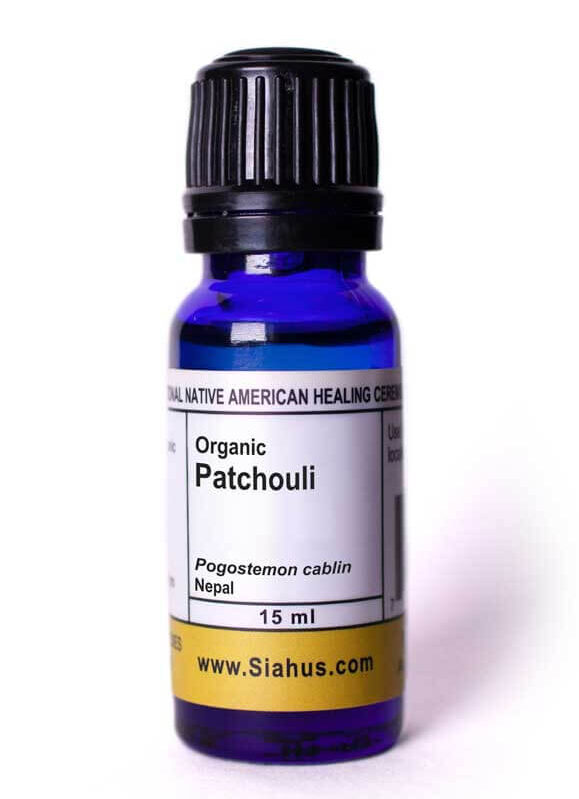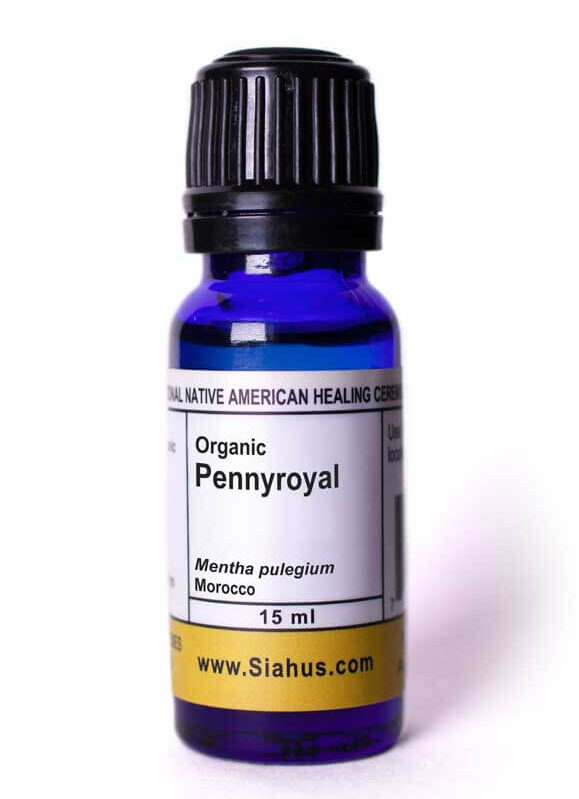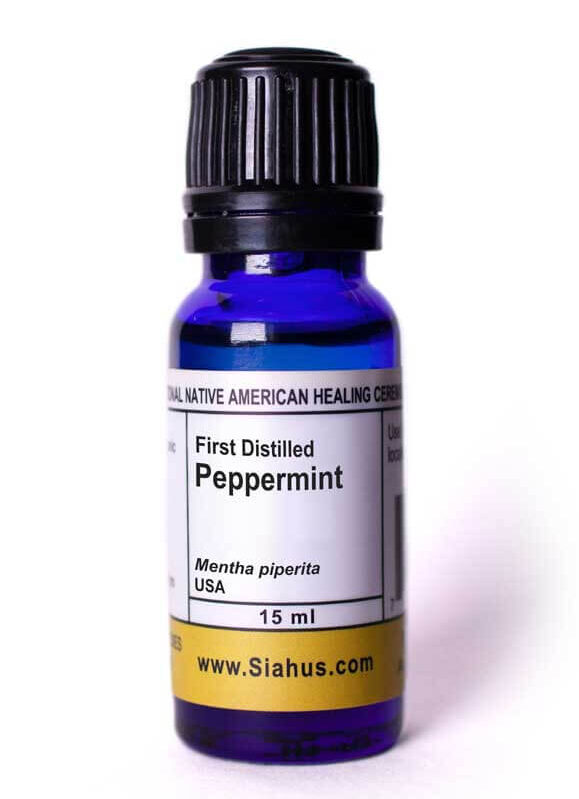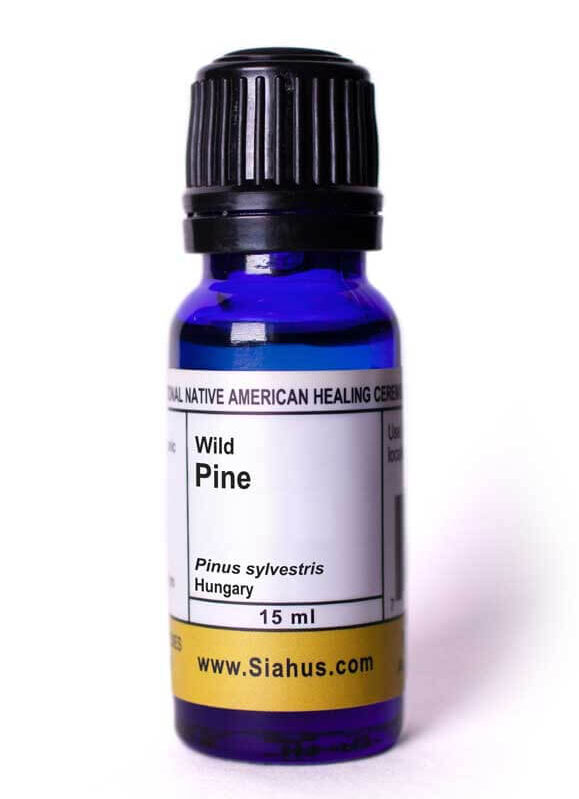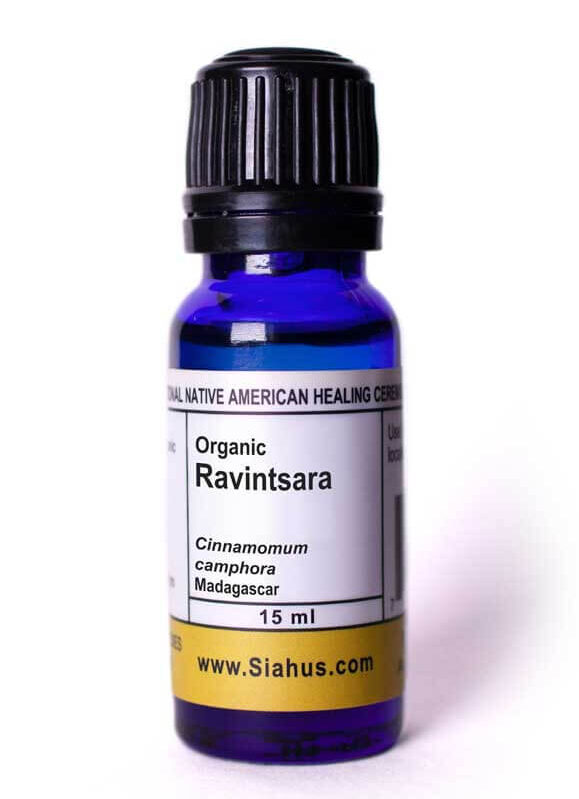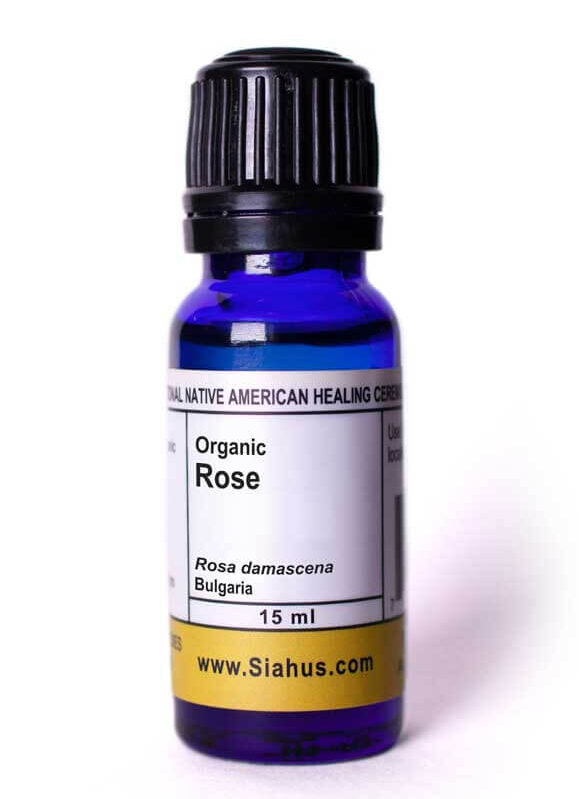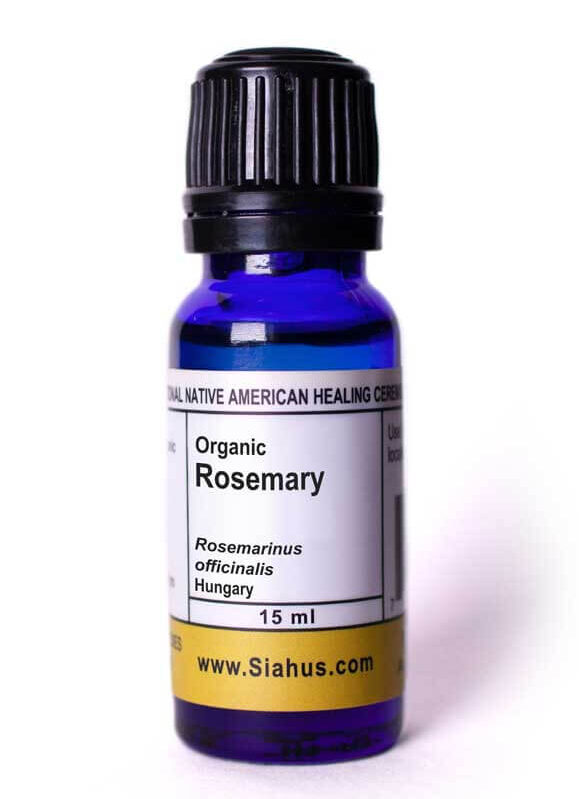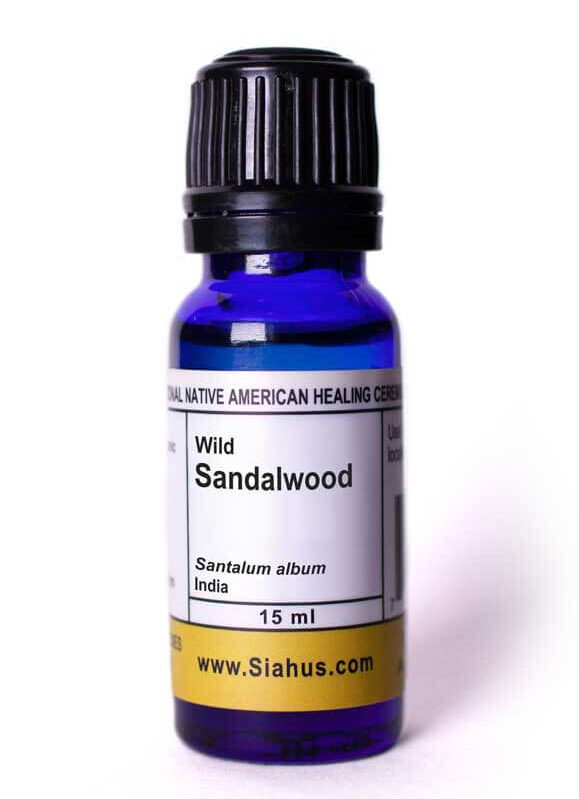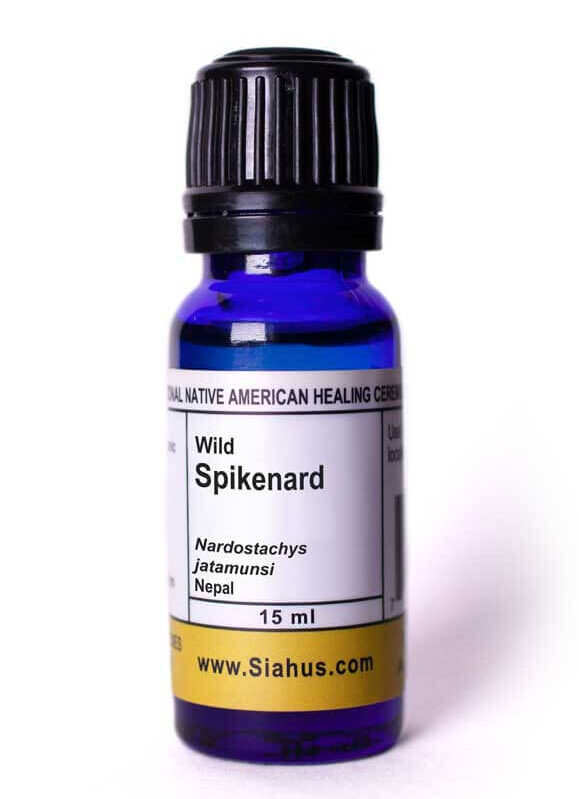Showing 73–84 of 98 results
Filter
Categories: Essential Oil Singles
Patchouli
$24.00
Man Found Standing Writes:
Patchouli, Organic: Nepal (Pogostemon cablin)
Patchouli is from the mint family and grows in tropical climates. This bushy herb contains a deep earthy and woody fragrance that has been used in incense and perfumes for centuries. Historically the plant would assist with warding off insects, dealing with insect bites or sings, balancing the emotions, stomach problems, and to assist with skin rejuvenation (dermatitis, acne, dry). The abundant cultivation and the ability for this plant to be harvested two or three times a year greatly assist in keeping the price of Patchouli in the lower range of essential oils.
The highest quality Patchouli oil is said to be distilled during the rainy season. Oil that is distilled in an iron distiller will contain iron oxide, rust, and give it a dark coloring whereas oil from a stainless steel distiller will be light in color. Patchouli also is said to improve with age because as the oil ages it will have slight chemistry change that will increase its aroma by deepening the fragrance.
Primary Usages: Assists skin (wrinkles, dermatitis, inflammation, impetigo, hives, eczema, acne, seborrhea, wound healing, scars, tissue regeneration, tones the skin) and emotional support issues (balancing, tension, nervousness, depression, insomnia, stress, anxiety, grounding).
Secondary Usages: Helpful for bacterial and fungal infections(athlete’s foot, jock itch, Candida), hair complaints (dandruff and oiliness),and beneficial when used for as an insect repellent and on insect bites or stings. Use as a general health tonic and to assist digestion (upset stomach, constipation, appetite suppressant).
Has Been Reported: Used as an aphrodisiac, diuretic, to break up cellulite, and to assist with substance addictions. Useful for allergies.
Descriptor: Regenerative, Antiseptic, Anti-Fungal, Sedative, Anti-Depressant, Alkalizing, Diuretic, Aphrodisiac, Astringent, Deodorant, Insecticide, Tonic
Application: Apply topically, in a bath, one drop in water for an internal tonic, and inhale or diffuse.
Caution: No special cautions.
Found In: Peaceful, Balance
Influences: Supports emotion issues and the releasing negative associations (anger, jealousy, physical and emotional trauma, obsessions, frustrations, insecurities). Assists to align the chakras of the body and it grounding and calming to the mind, body, and spirit.
Medicine Wheel: A Primary Center and Secondary East. Balances the Qi.
Blends Well With: Bergamot, Black Pepper, Cedarwood, Chamomile, Cinnamon, Clary Sage, Clove, Frankincense, Geranium, Ginger, Grapefruit, Lavender, Lemongrass, Litsea, Mandarin, Myrrh, Neroli, Rose, Sandalwood, Tangerine, Vetiver, Ylang Ylang
Recipes: For a calming blend add three drops each of Patchouli, Lavender, and Grapefruit. Diffuse or mix with a carrier and massage onto the skin.
Country of Origin: Nepal, Organic
Botanical Name: Pogostemon cablin
Plant Part: Leaf
Note: Earthy, Woody
$24.00
Categories: Essential Oil Singles
Pennyroyal
$17.00
Country of Origin: Morocco, Organic
Botanical Name: Mentha pulegium
Plant Part: Flowers
Note: Uplifting, Fresh, Minty
$17.00
Categories: Essential Oil Singles
Peppermint, First Distilled
$15.00
Man Found Standing Writes:
Peppermint: USA First Distilled (Mentha piperita)
The Mentha piperita is a hybrid of water mint and spearmint and historically this medicinal herb was indigenous to Europe and was used by the ancient Egyptians, Grecians, and Romans for flavoring, fragrance, digestive aid, insect and rodent repellent, and to whiten teeth. In Chapter Two we shared some information about what the classification of First Distilled Peppermint is and how it differs between most all Peppermint oil supplied in the market. Sadly, in the market a lot of Peppermint oil is also adulterated with Corn Mint, especially the oil coming in from the Asia area. Corn Mint is higher in Menthol and is lower it its overall therapeutic value.
Primary Usages: Assists the respiratory system (flu, colds, fevers, throat infections, asthma, bronchitis, sinusitis, spasmodic coughs, cramps), increases circulation, opens the sensory system, fights bacteria, inflammation, spasms, neuralgia, pain (muscle, joint), palpitations, and jet lag. It is a wonderfully powerful breath freshener.
Secondary Usages: Assists the nervous system (mental alertness, shock, fatigue, stress, fainting, headaches, vertigo, migraines), helpful for digestive issues (colic, dyspepsia, gas, nausea, diarrhea, halitosis, indigestion, heartburn), and stimulates the gall bladder and liver. Add a drop or two to water during the summer months to have a cooling effect on the body. Beneficial for repelling insects and rodents.
Has Been Reported: Assists skin issues (acne, dermatitis, ringworm, poison ivy, sunburns, itchy skin, scabies), female problems (regulates menstruation and hot flashes,), and aids toothaches.
Descriptor: Analgesic, Decongestant, Expectorant, Aids Digestion, Antiseptic, Anti-inflammatory, Liver Stimulant
Application: Apply topically, ingest, or diffuse.
Caution: Considered a hotter oil and possible skin irritant. Dilute if necessary. Avoid using near the eyes.
Found In: Courage, Breathe Ez, Sports Pro, Rejuvenate, Fortify, Divine, Prosperity, Joint Support, Sports Pro, Tummy Rub
Influences: Uplifting and refreshing. Assists to relieve mental fatigue and improves focus.
Medicine Wheel: A Primary South and Secondary Center and North. Moves Qi energy will be rectifying the brain and spirit.
Blends Well With: Basil, Bergamot, Black Pepper, Cajeput, Cedarwood, Cinnamon Bark, Cypress, Eucalyptus, Geranium, Ginger, Grapefruit, Ho-Leaf, Juniper Berry, Lavender, Lemon, Lime, Mandarin, Marjoram, Melaleuca, Pine, Rosemary, Spearmint, Tea Tree, Thyme
Recipes: For a wonderful air freshener mix four drops of Peppermint and Pine with two drops of Grapefruit and diffuse. For bug bites, apply directly on affected area and dilute if necessary.
Country of Origin: USA, First Distilled, Ethically Cultivated
Botanical Name: Mentha piperita
Plant Part: Leaf and Plant
Note: Minty with Herby Undertones
$15.00
Categories: Essential Oil Singles
Petitgrain
$15.00
Man Found Standing Writes:
Petitgrain Bigarade, Organic: Paraguay (Citrus aurantium)
Historically the Petitgrain oil has been used in a wide range of health conditions including stomach issues, lymphatic drainage, and pain. This tree produces a wide array of healing properties from the oil. Oil can be obtained from the fruit, flowers, and leaves. The two most popular oils are Petitgrain Bigarade which is steam distilled from leaves and twigs and the much more expensive Neroli which comes from the blossoms. The pressed oil from the fruit of the bitter orange tree should not be confused with the regular Orange tree (Citrus sinensis).
Primary Usages: Assists with skin issues (acne, oily skin and hair, boils, toning, tissue regeneration), emotional issues (exhaustion, nervousness, negative energy, clear thinking, stress, depression, relaxing, insomnia, mental fatigue, balancing, low self-esteem, trauma, panic, anger, calming), and is considered an immune stimulant (infections, bacteria). General health tonic.
Secondary Usages: Assists respiratory issues (asthma, infections), heart complaints (arterial circulation, palpitations, cardiovascular spasms), and aids digestion (pain, gas, parasites).
Has Been Reported: Assists muscles and joints (pain, inflammation, spasms), re-establishes nerve equilibrium, stops excessive perspiration, and beneficial to combat venomous bites or stings. Use to assist in overcoming addictions.
Descriptor: Regenerative, General Tonic, Alkalizing, Nervine, Antidepressant, Aids Digestion, Decongestant, Anti-Spasmodic, Antiseptic, Immune Stimulant
Application: Apply topically on location, diffuse, in a bath, body spray, and add a drop or two to your water as a general tonic and for lymphatic drainage.
Caution: No special cautions.
Influences: Uplifting and assists in letting go of negative energies, pain, panic, and anger. Awakens the mind, body, and spirit to achieve a higher level of consciousness and love of self.
Found In: Circulate and Hope
Medicine Wheel: A Primary South and Secondary Center.
Blends Well With: Bergamot, Cedarwood, Cinnamon, Clary Sage, Clove Bud, Cypress, Eucalyptus citriodora, Frankincense, Geranium, Jasmine, Juniper Berry, Lavender, Lemon, Lime, Mandarin, Marjoram, Orange, Neroli, Nutmeg, Palmarosa, Patchouli, Roman Chamomile, Rose, Rosemary, Rosewood, Sandalwood, Tea Tree, Ylang Ylang
Recipes: As a body lotion mix six drops of Petitgrain to three drops each of Roman Chamomile, Bergamot, and one drop of Ylang Ylang Extra in one ounce of carrier oil. Massage on the body. For an uplifting diffusing blend take three drops each of Petitgrain and Mandarin and mix with two drops each of Bergamot, Lime, and Ylang Ylang Extra. For skincare combine six drops of Petitgrain, three drops of Tea Tree, and two drops each of Lavender and Jasmine. Mix with one ounce of carrier oil and apply on location as needed.
Country of Origin: Paraguay, Organic
Botanical Name: Citrus aurantium
Plant Part: Leaf
Note: Citrus, Light
$15.00
Categories: Essential Oil Singles
Pine
$12.00
Man Found Standing Writes:
Pine, Wild: Hungary (Pinus sylvestris)
Pine tree is a large, fast growing evergreen used for ornamental parks due to the tree’s resistant to extreme snowy and icy conditions and having a life expectancy of up to 500 years. Over the ages the trees were relied upon for building materials and the needles were use historically for respiratory issues, prevent scurvy, pain, and to repel insects.
The essential oil is low cost due to wild material being readily available for distillation throughout the world. (If you diffuse this oil in great abundance, this oil can be mildly irritating to the respiratory system. Also extreme internal use can be harmful to the kidneys.)
Primary Usages: Assists with respiratory complaints (phlegm, chest and sinus infections, colds, coughs, flu, sinuses, bronchitis, asthma, sore throats, expectorant), helpful with the urinary tract (bladder and kidney infections, diuretic, cystitis), and aids with pain relief (muscle and joint pains, rheumatism, arthritis, inflammation).
Secondary Usages: Aids the glandular system, stimulates the adrenals, circulatory system, nervous system, antiseptic for wounds, and used to repel and kills insects (add to shampoo to kill lice). Increases metabolism and is beneficial for skin conditions (eczema, psoriasis, ring worm, athlete’s foot, acne, scabies, wounds).
Has Been Reported: Beneficial for emotional issues(anxiety, negative thoughts, procrastination, lack of self-confidence) and assists in awakening the mind(memory retention, concentration). Use to promote eye health and improved eyesight.
Descriptor: Decongestant, Digestive Aid, Antiseptic, Anti-Inflammatory, Analgesic, Antispasmodic, Diuretic
Application: Natural disinfectant to add to cleaning products, diffuse to deodorize, on location.
Caution: Skin irritant when oxidized.
Found In: Mountain Retreat
Influences: Intense pine scent that is uplifting and refreshing. Awakens spiritual awareness and assists the mind, body, spirit connection. Assists to regulate and balance the flow of energy through the meridians.
Medicine Wheel: A Primary North and Secondary West. Balances the Qi.
Blends Well With: Bergamot, Birch, Cedarwood, Clary Sage, Eucalyptus, Frankincense, Grapefruit, Juniper Berry, Lavender, Lemon, Lemongrass, Melaleuca, Melissa, Myrtle, Rosemary
Recipes: Diffuse during the winter holidays for an extra forest fresh scent. For a mind refreshing diffusing fragrance take seven drops of Black Pine, four drops of Orange, and two drops each of Peppermint, Frankincense, and Cinnamon Bark. Add to a diffuser.
Country of Origin: Hungary, Wild
Botanical Name: Pinus sylvestris
Plant Part: Needles
Note: Conifer
$12.00
Categories: Essential Oil Singles
Ravintsara
$25.00
Man Found Standing Writes:
Ho Leaf, (Ravintsara) Organically Grown: Madagascar (Cinnamomum camphora)
Ho Leaf, also called Ravintsara, is a tall evergreen tree that was native to Asia but is now grown in many other countries. The essential oil was first distilled in the 1800’s from the leaves, twigs, or the wood of trees that were at least 20 years old. It has a very camphor-eucalyptus scent and was commonly used in flavorings, household products, soaps, and pharmaceuticals.
Up to WWII, the production of Ho Leaf for commercial use was a major industry for the Japanese government. It monopolized this prized tree to producemedicines and as additives to make different industrial products like smokeless gunpowder, plastics, and so forth.
In Ayurvedi medicine, Ho Leaf was used to increase the life force or energy that opens the senses, calms the nerves, and dispels negative energies. It was also used for protection and purification ceremonies. This oil has often been referred to as the “oil that heals”.
Primary Usages: Assists with respiratory issues (colds, bronchitis, congestion, fevers, pneumonia, sinusitis, sore throats, coughs, the flu, lung infections, allergies, eases breathing), viral infections (hepatitis, herpes, cold sores, cholera, mononucleosis), aids with wound healing (antiseptic, cuts, burns, bruises, sprains, Shingles, chicken pox,), and bacterial skin infections (athlete’s foot, ring worm).
Secondary Usage: Aids with nerves (insomnia, stress, fatigue), helpful with rheumatic conditions (inflammation, joints, muscle pain, circulation), assists with emotional issues (anxiety, stress, depression, fear, self-confidence), and is use as an effective insect repellant.
Has Been Reported: Used to assist the liver.
Descriptor: Decongestant, Expectorant, Antiseptic, Antimicrobial, Immune Stimulant, Antispasmodic, Nerve Tonic
Application: Inhale, diffuse or apply topically.
Caution: Avoid take any internally and application near infants because of the risk of spasm of glottis, due to cooling effect on respiratory system.
Found In: Breathe Ease, Fortify, Hair Support
Influences: Assists to release grief from the heart, eases anxiety, and promote feelings of hope. Affects the solar plexus and the heart chakras.
Medicine Wheel: A Primary North.
Blends Well With: Basil, Bergamot, Black Pepper, Black Pine, Cardamom, Cedarwood, Cinnamon Bark, Clary Sage, Clove Bud, Eucalyptus, Fir Needle, Grapefruit, Helichrysum italicum, Lavender, Lemon, Mandarin, Marjoram, Orange, Oregano, Palmarosa, Peppermint, Pine Needles, Rosemary, Sandalwood, Tangerine, Tea Tree, Thyme
Country of Origin: Madagascar, Organic
Botanical Name: Cinnamomum camphora
Plant Part: Leaves
Note: Medicinal Scent, a Camphorous Aroma with Woody Notes
$25.00
Categories: Essential Oil Singles
Rose
$550.00
Man Found Standing Writes:
Rose, Organic: Bulgaria (Rosa damascena)
The therapeutic Rose we use is actually a hybrid derived from two or three different species that originally came from the Gulf of Persia. In the 10thcentury, the first Rose oil was distilled by a Persian physician, with the distillery existing up until 1612. Also, during the 16th century, Turkish merchants imported roses for cultivation in Bulgaria and Turkey. Soon Bulgaria became known for its high-quality oil and was the world’s largest exporter.
When the flowers are ready, they must be handpicked early in the morning and distilled immediately before any major loss of oil. Rose is one of those special oils that use the double steam distilled extraction methods to obtain the complex chemistry found in the therapeutic oil. The pure therapeutic oil is highly concentrated and it takes about ninety pounds of rose petals to make 15ml of oil.
Pure Rosa damascene goes solid at just below room temperature and has more of a honey like fragrance that is quite intense. Normally people prefer it highly blended to a gentler aroma. Due to the high price of pure quality oil, the Rose market is flooded with inferior quality and adulterated oil.
Primary Usages: Assists with emotional issues (depression, low self-esteem, shock, anger, nervous tension, trauma, calming, relaxing, anxiety, grief), skin conditions(regeneration, broken capillaries, herpes, shingles, burns, acne, inflammation, blemishes, skin elasticity, scars, dermatitis, wrinkles, wounds, stretch marks, eczema), and used as an aphrodisiac (sexual problems, impotency, frigidity, lack of interest).
Secondary Usages: Assists with heart problems (poor circulation, palpitations, arrhythmia, high blood pressure, high cholesterol),respiratory issues (asthma, coughs, bronchitis, tuberculosis, sore throats, hay fever, spasms), balances hormones (menstrual issues, infertility), fights infections (strep, staph, E. coli, anthrax), stimulates the immune system, aids uterine disorders, and assists digestive issues (cholera, diarrhea, nausea, food poisoning).
Has Been Reported: Has been used internally as a tonic for the liver and gallbladder as well as a support for the release of emotional trauma. Used in many perfumes and cosmetics.
Descriptor: Anti-Depressant, Sedative, Nervine, Regenerative, Antiseptic, Antispasmodic, Aphrodisiac, Astringent, Tonic
Application: Apply topically on location, over the heart, and inhale.
Caution: Hormonal support so use with caution while pregnant.
Found In: Circulate, DNA Release, Rose Blend, Ageless, Balance
Influences: Creates a sense of wellbeing, loved and enhances spirituality and meditation. Wonderful oil to smell and rub over the heart and ears in times of emotional hardship.
Medicine Wheel: A Primary Center and Secondary South.
Blends Well With: Bergamot, Geranium, Jasmine, Lavender, Roman Chamomile, Ylang Ylang
Country of Origin: Bulgaria, Organic
Botanical Name: Rosa damascena
Plant Part: Flower
Note: Flowery Sweet Honey Like
$550.00
Categories: Essential Oil Singles
Rosemary
$13.00
Man Found Standing Writes:
Rosemary, Organic: Hungary (Rosmarinus officinalis)
Historically the Egyptians Greeks, Hebrews, and Romans considered Rosemary as a sacred plant. It was used to protect against evil spirits, bad energies, and witchcraft. Rosemary was considered the herb for memory and love and is associated with all things dear to the heart. It was used at funerals to keep the memory of the departed alive and also used at weddings to create the timeless bond of love of the couple. Early folklore states that when the Virgin Mary placed her cloak over the Rosemary bush, it changed the color from white to red. Rosemary was also burnt in hospitals in France during epidemics.
Rosemary can have a wide range of chemotypes that are all very therapeutic. Depending on where and when the plant was harvested you may have a rosemary that is predominantly Oxides (Cineole), Monoterpenes (alpha-Pinene or Camphor), or Monoterpene Hydrocarbons (beta-Myrcene). So when using Rosemary on small children, be extra cautious if the chemotype is not known.
Primary Usages: Respiratory conditions (catarrh, bronchitis, sinusitis, asthma, coughs, decongestant, colds, flu), relieves pain (arthritis, gout, inflammation, rheumatism), aids the central nervous system (brain stimulate, mental fatigue, memory, headaches, nervous exhaustion, depression),and assists skin (infections, dermatitis, eczema, varicose veins, wounds, tones).
Secondary Usages: Assists the immune system, cardiovascular and endocrine systems (lowers blood pressure, blood cholesterol, poor circulation, palpitations), eases digestion (diarrhea, cellulite, colitis, cramps, dyspepsia, bloating, flatulence), works as a diuretic (water retention),stimulates liver metabolism (cirrhosis, enlarged liver), gallbladder action(bile), and assists with hair loss.
Has Been Reported: Aids diabetes, female issues (cycle, regulates ovary function, menstrual cramps), and male issues (testicular functions, supports prostate, sperm).
Descriptor: Decongestant, Expectorant, Antiseptic, Immune Stimulant, Analgesic, Anti-Inflammatory, Antispasmodic, Diuretic
Application: Apply topically or diffuse.
Caution: Avoid take any internally and application near infants. Camphor can cause seizure or convulsions in large amounts.
Found In: Purify, True Blue, Gentle Healer, Fortify, Divine, Prosperity
Influences: Strengthens mental awareness and stimulates the mind. Uplifting and refreshing.
Medicine Wheel: A Primary Center and Secondary East and North. Opens the heart chakra promoting circulation of Qi energy and blood.
Blends Well With: Basil, Bergamot, Cedarwood, Citronella, Cypress, Elemi, Eucalyptus, Frankincense, Juniper Berry, Lavender, Marjoram, Peppermint, Petitgrain, Pine, Thyme
Country of Origin: Hungary, Organic
Botanical Name: Rosemarinus officinalis
Plant Part: Leaf and Plant
Note: Herbal, Strong, Uplifting
$13.00
Categories: Essential Oil Singles
Sage
$20.00
Man Found Standing Writes:
Sage, Organic: Hungary (Salvia fruticosa miller)
Sage is a perennial herb native to the eastern Mediterranean region and has been use therapeutically for thousands of years. The Mediterranean or Greek Sage is quite similar to White Sage that the Native Americans use in their spiritual ceremonies and traditional medicine. Historically Sage was considered divers and “cure all” from whitening the teeth, a spice for flavoring, spiritual usages, strengthening the mind, stopping body trembling, liver disease, anti plague remedy, assist female issues, pain, and so forth. There was a Latin saying of, “Why should a man die whilst there is Sage growing in the garden?”
With hundreds of different species of Sage, you will mostly find on the market the Salvia fruticosa, high in the chemical Cineol and the Salvia officinalis, high in the chemicals of Thujone and Camphor. Both verities of sage should be used in moderation but the Greek Sage is considered more of an overall therapeutic essential oil. Carful distillation is needed to keep the Cineol content lower, around thirty seven percent, and therefore increasing the other therapeutic properties found in the oil.
Primary Usage: Strengthens the vital centers, assists digestion (balancing, metabolism, laxative), glandular disorders, balance hormones (improves estrogen and progesterone-testosterone balance, menstruation, menopausal symptoms), and actives the nervous (adrenal cortex),lymphatic, liver, urinary and pulmonary systems.
Secondary Usage: Assists with the respiratory system (mucus, colds, bronchitis, asthma, tuberculosis, coughs, sinusitis, flu, congestion, pneumonia), skin conditions (acne, psoriasis, eczema, edema, dandruff, hair loss, wounds, athletes foot, ring worm, astringent) and is used as a disinfectant.
Has been reported: Assists cellulites, edema, gingivitis, night sweats, pain relief (sprains, joint issues, rheumatism, arthritis). Beneficial for use as a deodorant and insect repellent.
Descriptor: Hormonal Balancing, Tonic, Stomachic, Expectorant, Antiseptic, Analgesic, Diuretic, Insect Repellant
Application: Diffuse or apply topically.
Caution: Avoid taking internally or application larger amounts near infants and sensitive individuals. Can have a cooling effect on the respiratory system.
Found In: Vitality
Influences: Relieves depression, mental fatigue, strain, and dispels negative energies. Considered a spiritual protective and cleansing oil.
Medicine Wheel: A Primary West and Secondary North.
Blends Well With: Bergamot, Grapefruit, Hyssop, Lavender, Lemon, Lime, Orange, Rosemary, Rosewood, Tangerine, Thyme
Recipes: For an immune system stimulant blend two drops each of Sage and Rosemary with one drop each of Black Pepper and Lemon. Mix with a carrier oil and massage into chest morning and evening.
Country of Origin: Hungary, Organic
Botanical Name: Salvia fruticosa miller
Plant Part: Leaves and Flowers
Note: Pungent and Herbal
$20.00
Categories: Essential Oil Singles
Sandalwood
$134.00
Man Found Standing Writes:
Sandalwood, Wild: India (Santalum album)
For millennia, the Sandalwood tree was valued as one of the most sacred trees that the Creator has given us by three major religions of the world, Buddhism, Hinduism, and Islam. Parts of the tree are used in the religious ceremonies and for religious artifacts. Over the past decade, the price for pure therapeutic Sandalwood has increased dramatically due to the shortage of trees, it’s the growing popularity, and the Indian government’s regulations on exporting Sandalwood products.
There are different types of Sandalwood found throughout the world, but the oil from India is considered the best. We have found that even slightly higher therapeutic oil can be extracted exclusively from the slowly steamed roots of the dying mature trees. The added labor costs and government restrictions have basically eliminated this oil being sold exclusively any more.
Primary Usage: Assists emotion issues (stress, self-confidence, negativity, grief, depression, fear, obsessions, egocentric behavior, loneliness, balancing) and assists to removes negative programming from the cells. A tonic for the urinary tract, kidneys, bladder (edema, cystitis, diuretic), lymph, immune system, and nerves(neuralgia, muscles spasms, sciatica). We have seen Sandalwood stop a seizure from developing and is wonderful to assist in bringing a person back into balance after a seizure. Just rub a drop on the ears and put a small amount under the nose.
Secondary Usages: Assists respiratory problems (bronchitis, coughs, catarrh, sinusitis, strep, staph, earaches, laryngitis, congestion), and heart issues (cardiac fatigue). Very helpful for skin issues (wounds, psoriasis, eczema, wrinkles, boils, dry, scalp, hair, scars, antiseptic, astringent), digestion (cholera, nausea, gastritis, diarrhea, fat metabolism), insomnia, impotence, and as anaphrodisiac.
Has been reported: Increases oxygen levels and relieves inflammation around the pituitary and pineal glands. Good results for treating hemorrhoids.
Descriptor: Antidepressant, Digestive, Diuretic, Anti-Inflammatory, Antiseptic, Restorative (Skin), Stimulant(Brain and Circulatory)
Application: Inhale or diffuse. Apply on feet, body, or on injured area. Take a few drops internally. A powerful anointing oil.
Caution: No special cautions.
Found In: Courage, DNA Release, Balance
Influences: Calming, grounding, and assists meditation in connecting with your spirituality.
Medicine Wheel: A Primary East and Secondary Center, North, and West.
Blends Well With: Bergamot, Black Pepper, Cedarwood, Chamomile, Cinnamon Bark, Clary Sage, Clove Bud, Coriander, Cypress, Elemi, Fennel, Frankincense, Geranium, Ginger Root, Grapefruit, Jasmine, Lavender, Lime, Mandarin, Myrrh, Neroli, Orange, Palmarosa, Patchouli, Peppermint, Rose, Rosewood, Tangerine, Vanilla, Vetiver, Ylang Ylang
Country of Origin: India, Wild
Botanical Name: Santalum album
Plant Part: Roots
Note: Rich, Earthy, Balsamic, and Sweet
$134.00
Categories: Essential Oil Singles
Spearmint
$20.00
Man Found Standing Writes:
Spearmint, Organic: Nepal (Mentha spicata)
Spearmint was used anciently for centuries as a covering on the street to welcome triumphant gladiators. Therapeutically the leaves were chewed to relieve heartburn, stomach aches, fevers, and sore throats. The powdered leaves were often used to repel insects and rodents.
Spearmint is in the mint family but unlike Peppermint the therapeutic oil contains minimal amounts of menthol which is the main chemical in Peppermint. Spearmint is widely cultivated on large industrialized farms and the oil is extracted to be used mostly as a flavoring agent.
Primary Usage: Assists with respiratory problems (spasmodic coughs, colds, asthma, bronchitis, inflammation, flu, fevers, hiccups, chest pain, congestion, improves breathing), hypertension, and stimulates the nerves, muscles, and glandular system. Aids brain functions (uneasiness, restlessness, stress, insomnia, anxiety, depression) and is considered to be a good antiseptic (wounds, scabies ,dermatitis), anti-fungal (Candida, athlete’s foot), anti-viral (syphilis, gonorrhea), and anti-bacterial (infections).
Secondary Usage: Balances the metabolism, regulates circulation, eases muscle strains, and assists with intestinal issues (flatulence, indigestion, appetite, nausea, cramps, colic, sore gums, parasites, spasms). Beneficial for headaches and useful as an insect and varmint repellant.
Has been reported: Eases muscle pains and inflammation and assists to balance hormones (menstrual and menopausal symptoms, reduces lactation, eases labor).
Descriptor: Anesthetic, Antidepressant, Antiseptic, Antispasmodic, Astringent, Carminative, Decongestant, Digestive, Diuretic, Expectorant, Insecticide, Stimulant, Stomachic
Application: Apply topically, inhale or diffuse.
Caution: Possible skin irritant. May need to dilute with a carrier oil.
Found In: DNA Release, Vitality, Tummy Rub
Influences: Promotes peace, happiness, and clarity. Assists to release emotion blocks.
Medicine Wheel: A Primary Wood and Secondary Fire
Blends Well With: Basil, Black Cumin, Chamomile, Cinnamon Bark, Clove Bud, Eucalyptus, Geranium, Ginger Root, Jasmine, Lavender, Lemon, Lemongrass, Myrrh, Myrtle, Nutmeg, Orange, Rosemary, Tea Tree
Recipes: For muscle pain add six drops of Spearmint to four drops each of Marjoram, Lemongrass, and Pine. Dilute with a carrier oil and apply on location. For stomach pain add six drops of Spearmint to three drops of Ginger, and two drops each of Tarragon and Fennel. Dilute with a carrier oil and apply to the abdomen.
Country of Origin: Nepal, Organic
Botanical Name: Mentha spicata
Plant Part: Leaf and Plant
Note: Minty, Herbal, Sweet, Uplifting
$20.00
Categories: Essential Oil Singles
Spikenard
$90.00
Man Found Standing Writes:
Spikenard, Wild: Nepal (Nardostachys jatamansi)
The Spikenard plant is native to Nepal and comes from the foothills of the Himalayas and is more costly oil due to the larger demand and low harvest yields. It is a member of the Valerian family and the oil is extracted like Valerian by steam distilling the roots. This oil has a lot of the same calming properties as Valerian but has a much more pleasant fragrance.
Anciently Spikenard has a long record for therapeutic use but was very costly and precious. In the Bible, Mary Magdalene used Spikenard to anoint Jesus’ feet before the Last Supper. The Romans used it for stress relief, insomnia, skin beautification, and as a spice for flavoring.
Primary Usage: Assists emotions and supports the nervous system (balancing functions, calming, relaxing, induces mental peace, harmony, supports deep sleep, releases trauma, eases grief). Beneficial for skin issues (dermatitis, psoriasis, dry, wound healing, inflammation, varicose veins, wrinkles, circulation, edema, rash) and assists digestion (food poisoning, constipation, colic, nausea).
Secondary Usage: Helps regulate hormones (menstruation, stimulates ovaries), lymph system, heart function, and assist with liver issues.
Has been reported: To be beneficial for fevers, Candida, hemorrhoids, and as a general tonic.
Descriptor: Nervine, Regenerative, Digestive, Antimicrobial, Antispasmodic, Diuretic, Tranquilizer
Application: Apply topically on location or diffuse.
Caution: Appears safe but use caution during pregnancy because it has been known to assist menstruation.
Found In: Hormone Balance and Oils of the Bible
Influences: Brings inner peace and balance. Relaxes the mind, body, and spirit to assist in opening oneself for the Creator’s spiritual assistance and is wonderful for grounding before meditation or prayer. Assists to promote generosity and truthfulness.
Medicine Wheel: A Primary Center and Secondary South.
Blends Well With: Cedarwood, Cinnamon Bark, Clary Sage, Clove Bud, Cypress, Fir, Frankincense, Geranium, Hyssop, Juniper Berry, Lavender, Lemon, Myrrh, Neroli, Orange, Palmarosa, Patchouli, Peppermint, Pine, Rose, Sage, Spruce, Vetiver
Recipes: For skin mix one ounce carrier oil with seven drops Spikenard, five drops of Lemon, and two drops each of Lavender, Vetiver, and Sandalwood. Apply on location. Here are a couple calming formulas we like for massage. Take six drops Spikenard, two drops Myrrh, and one drop Rose mixed in some carrier oil and massaged on the body. Also mix four drops Spikenard, three drops Petitgrain, and one drop Neroli in carrier oil and massage on the body.
Country of Origin: Nepal, Wild
Botanical Name: Nardostachys jatamansi
Plant Part: Roots
Note: Warm and Earthy
$90.00

